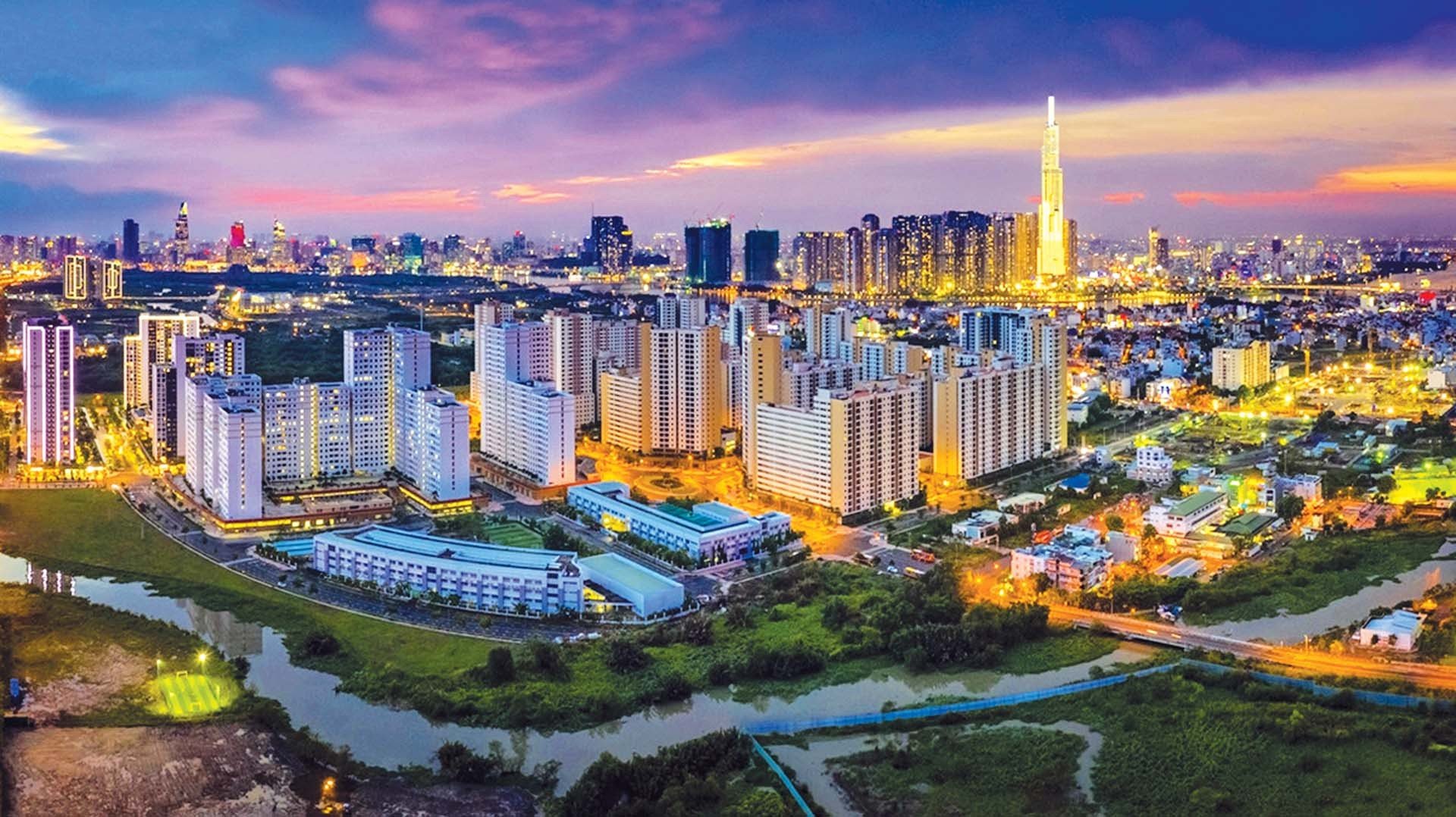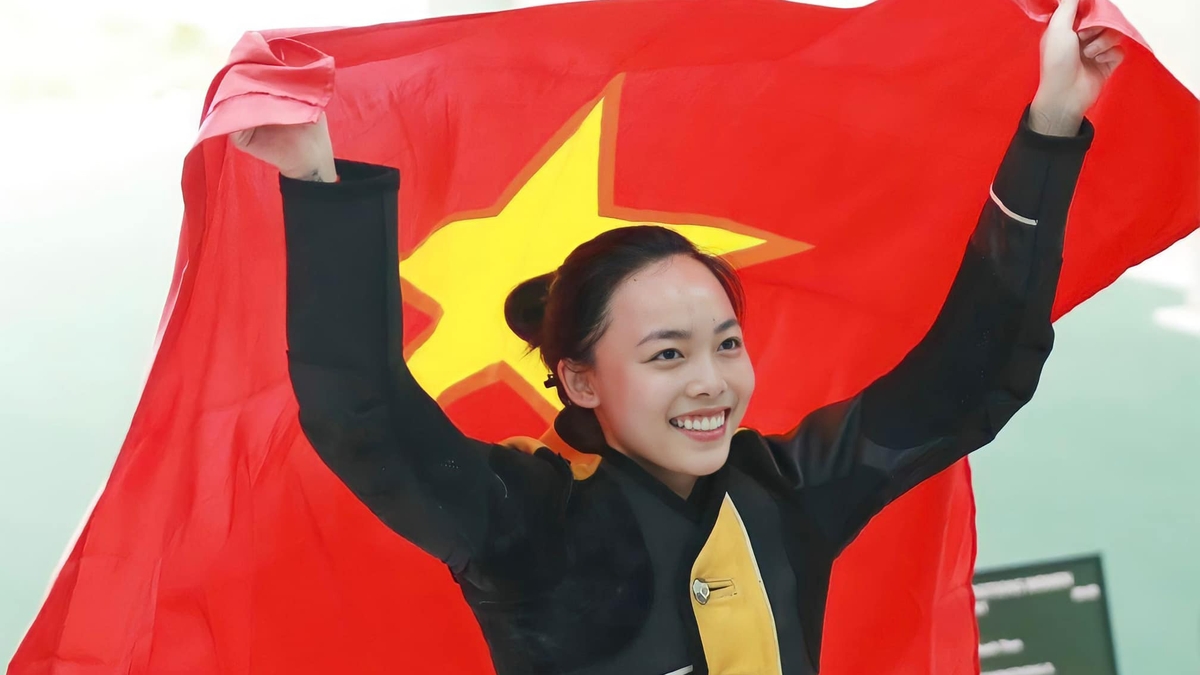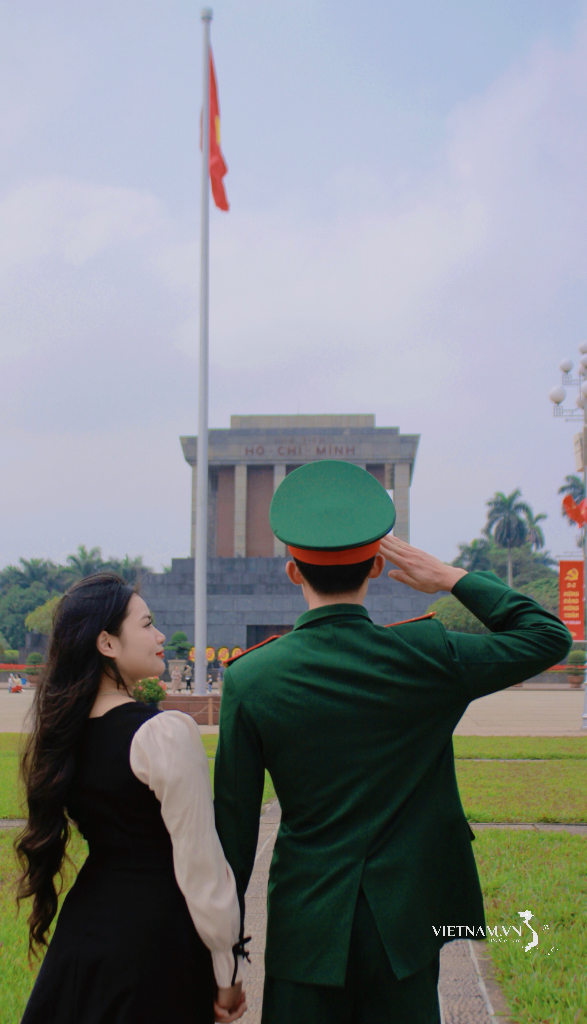 |
| A vision for 2050 should be set for Ho Chi Minh City to develop to the level of major cities worldwide, becoming one of the important financial centers in the Indo- Pacific region. (Source: VNA) |
Vietnam is considered one of the countries that has successfully implemented the United Nations' Sustainable Development Goals (SDGs), creating tremendous changes for its people. Vietnam has nationalized the SDGs through the issuance of the National Action Plan (NAP) for the 2030 Agenda for Sustainable Development in May 2017, with a focus on the sustainable development of urbanization in provinces and cities nationwide.
Pilot testing of specific mechanisms and policies.
Ho Chi Minh City is a major center for economy, culture, education and training, science and technology, making the largest contribution to the overall economic development of the country. It is the economic engine in various fields and has a significant influence and impact on the entire nation. In accordance with Resolution No. 16-NQ/TW 2012 of the Politburo and the 2017 National Action Plan, the National Assembly issued Resolution No. 54/2017 on piloting special mechanisms and policies for the sustainable development of Ho Chi Minh City.
Based on the above guidelines, the Ho Chi Minh City Party Committee issued Resolution No. 08-NQ/TU on December 6, 2017, and the city has achieved certain results. Except for the years severely affected by the Covid-19 pandemic, the city's economy has consistently experienced high growth, averaging 7.72% annually during the 2016-2019 period, higher than the 7.22% of the 2011-2015 period. The policy of distributing additional income has been implemented openly and transparently, contributing to improving the lives of cadres, civil servants, and public employees, fostering a spirit of creative work, and strengthening and improving the efficiency and quality of the state apparatus in various fields…
However, alongside the achievements, there are still some limitations, such as mechanisms for adjusting revenue collection policies, implementing equitization, arranging land and housing for central agencies, and disbursing capital for central projects in the area. Some mechanisms, although implemented, have low effectiveness; policies to attract experts, scientists, and exceptionally talented individuals have not been widely applied; and there is a lack of specific financial mechanisms to help the city mobilize additional resources to address pressing infrastructure issues, social and environmental problems, and improve the investment environment.
The Fourth Industrial Revolution (4IR) blurs the lines between biology, physics, and engineering thanks to the Internet of Things (IoT) technology. Furthermore, 4IR impacts cities and shapes the concept of a "smart city," viewed through the lens of 4IR, with specific challenges in areas such as planning, buildings, connectivity, data, energy, governance, and transportation.
For 4IR to be integrated into cities, three criteria must be met. First, the concept of sustainability should extend beyond the economic ecosystem.
Secondly, urban planning practices are crucial. However, urban planning is a massive information product requiring accuracy and timely, frequent updates to transform information into a resource that promotes positive, collaborative action across society. Digital technology can easily build virtual networks in conjunction with physical structures to contribute to the effective practice of urban planning information dissemination in a transparent and open manner for the entire population.
Third, the success of smart cities depends on innovative businesses that address the challenges of 4IR and are an integral part of the process. Smart cities first and foremost require effective, innovative, and scientifically-based governance design strategies.
Faced with new opportunities in the context of the country's favorable economic and geopolitical position in the region, in December 2022, the Politburo issued Resolution No. 31-NQ/TW on the direction and tasks for the development of Ho Chi Minh City until 2030, with a vision to 2045, and the Government issued Decision 642/QD-TTg 2022 on the task of developing the Ho Chi Minh City Planning for the period 2021-2030, with a vision to 2050. Currently, the Government is preparing a new Resolution on piloting superior mechanisms and policies for the development of Ho Chi Minh City to submit to the National Assembly.
The draft resolution focuses on developing mechanisms and policies in eight areas: investment management; finance and budget; urban management and environmental resources; priority sectors for attracting strategic investors; science and technology management and innovation; city organizational structure; Thu Duc City organizational structure; and law application.
Urgent solutions
To effectively implement the above directions and contribute to the draft of the new Resolution, in the current context where Ho Chi Minh City's economic growth rate is very low (GRDP estimated to increase by 0.7% year-on-year); the real estate and financial markets are facing many difficulties; bad bank debts and bond maturity pressures are on the rise; businesses are dissolving, continuing to cut labor, and facing more difficulties in orders and capital; consumer purchasing power is decreasing; input costs are increasing… short-term and long-term solutions are needed.
Short-term solutions
The government is strengthening fiscal and monetary policies to support immediate demand stimulation, such as extending and waiving taxes and land rent. Banks and credit institutions are restructuring loan repayment terms, maintaining loan classifications, waiving or reducing interest and fees, and especially lowering bank interest rates, in line with the development of a healthy, competitive market economy and the win-win principle. In addition, measures are needed to stimulate market purchasing power and provide unemployment support.
Medium and long-term solutions
It is necessary to study the model of autonomous/self-governing urban governance with active citizen participation to develop an inexhaustible source of social capital for modern urban management. Gradually build and implement a two-tiered urban model with the district level as the basic level for Ho Chi Minh City, aiming to ensure improved efficiency in the city's organizational structure in investment and budgetary finance, as well as minimize bureaucratic management that is time-consuming and lacks transparency regarding rights and responsibilities in urban governance. Alongside the development of this new model, priority should be given to researching and developing corresponding laws to ensure enforceability. This is also a key criterion for evaluating the effectiveness of legislators.
Strong pilot support policies are needed in two priority industrial sectors with breakthrough and spillover effects: finance and logistics, because Ho Chi Minh City is home to 54% of the country's total professional logistics service providers and currently contributes 22.3% of GDP, accounts for nearly 27% of the national budget, and attracts nearly 34% of the country's FDI projects...
Given its status and important geopolitical position, Ho Chi Minh City deserves to be an international financial and logistics center. Associations and businesses need to orient their innovation towards smart city development in these two areas in order to effectively apply new technologies and connect with global partners.
It is necessary to define a vision for 2050, aiming for Ho Chi Minh City to develop to the level of major cities worldwide, becoming one of the important financial and logistics service centers in the Indo-Pacific region. Based on this, the Ho Chi Minh City master plan for the period 2021-2030, with a vision to 2050, should be developed to serve as a foundation for socio-economic development plans to concretize the city's strategic vision.
When developing planning, it is necessary to study and build policy mechanisms to promote and integrate resources for socio-economic development. The five-resource model for socio-economic development (including resources, people, products, finance, and society) can be an effective reference in this process.
With the city's utmost efforts, the government's strong and groundbreaking support policies in developing new urban models and prioritizing key sectors, especially defining a strategic vision through comprehensive planning, will be the driving force and guiding principle towards a smart Ho Chi Minh City in the first half of the 21st century. This will enable the city to not only be the economic engine of the country but also contribute to achieving the United Nations Millennium Development Goals in the 4IR era.
Source




![[Photo] Prime Minister Pham Minh Chinh attends the Conference on the Implementation of Tasks for 2026 of the Industry and Trade Sector](/_next/image?url=https%3A%2F%2Fvphoto.vietnam.vn%2Fthumb%2F1200x675%2Fvietnam%2Fresource%2FIMAGE%2F2025%2F12%2F19%2F1766159500458_ndo_br_shared31-jpg.webp&w=3840&q=75)









































































































Comment (0)